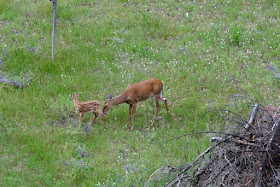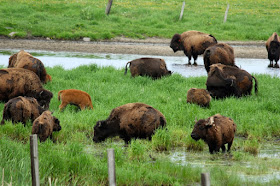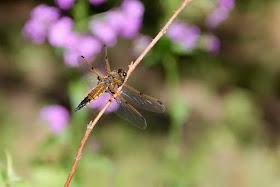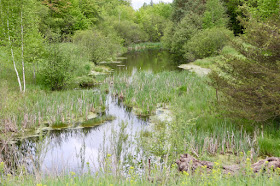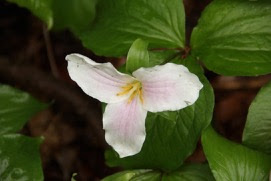 |
| Large-flowered Trillium fading to pink
Photo by J. Harrington
|
Between the political games and nonsense going on in St. Paul and in Washington, D.C., I need a soothing dose of reality. Fortunately, I've (re)discovered one. We had an interesting conversation at dinner last night about the Walker museum's exhibit of Sam Durant's sculpture, Scaffold, and the reaction of the local Dakota and arts communities. While pondering some of those issues and concerns again this morning, I wondered why the Walker hadn't someone like Kent Nerburn on retainer. If you haven't read any of Kent's works, you should. Anyhow, in checking his web site I learned that he has tweaked and is now (re)publishing a new version of his A Haunted Reverence, Meditations on a Northern Land, under a new title, NATIVE ECHOES — Listening to the Spirit of the Land.
I may or may not get a copy of the new edition, but I will soon to spend time curled up in the sun (re)reading our copy of the original. I am becoming more and more convinced that North American "culture" needs a much larger element of Native American culture if it is to persist in any shape at all, let alone thrive. Nerburn offers a bridge for those with the sense and desire to cross it. I'm headed across that bridge as #45 works on pulling the U.S. out of the Paris Agreement. Truly, we have reached a point where the inmates must emulate McMurphy and take control of the asylum or we forfeit our futures to a Nurse Ratched wannabe.
Listenwith the night falling we are saying thank youwe are stopping on the bridges to bow from the railingswe are running out of the glass roomswith our mouths full of food to look at the skyand say thank youwe are standing by the water thanking itstanding by the windows looking outin our directionsback from a series of hospitals back from a muggingafter funerals we are saying thank youafter the news of the deadwhether or not we knew them we are saying thank youover telephones we are saying thank youin doorways and in the backs of cars and in elevatorsremembering wars and the police at the doorand the beatings on stairs we are saying thank youin the banks we are saying thank youin the faces of the officials and the richand of all who will never changewe go on saying thank you thank youwith the animals dying around ustaking our feelings we are saying thank youwith the forests falling faster than the minutesof our lives we are saying thank youwith the words going out like cells of a brainwith the cities growing over uswe are saying thank you faster and fasterwith nobody listening we are saying thank youthank you we are saying and wavingdark though it is
********************************************
Thanks for visiting. Come again when you can.
Please be kind to each other while you can.
